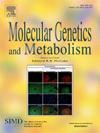法布里病关键亚组的左心室肿块进展与临床事件相关:来自法布里登记的分析
IF 3.5
2区 生物学
Q2 ENDOCRINOLOGY & METABOLISM
引用次数: 0
摘要
前言:心血管并发症是法布里病发病和死亡的主要原因。尽管有针对疾病的辅助治疗,但在护理方面仍存在差距。心脏成像有助于了解疾病进展,然而,关于法布里病成像终点的临床相关性的数据很少。因此,我们评估了超声心动图测量的左心室质量指数(LVMi)与随后临床事件风险之间的关系。方法分析法布里注册中心接受酶替代治疗、超声心动图测量和无肾脏事件的成人患者。复合临床事件包括心脏、脑血管和肾脏事件或死亡。使用Cox比例风险模型来估计(1)基线LVMi和(2)LVMi进展(即斜坡)与后续临床事件风险之间的风险比(HR)和95%置信区间(CI)。结果基线LVMi分析包括809例患者(53.1%为女性),诊断时的中位年龄[25,75个百分点]:39.5岁[26.7,52.2]),有248例临床事件,包括170例心脏事件,分别超过4752和5128人年。较高的基线LVMi与较高的综合临床和心脏事件风险相关(每升高10%的基线LVMi调整HR: 1.09; 95% CI: 1.04-1.13;p & lt;0.001]和1.11 [95% CI: 1.06-1.17;p & lt;分别为0.0001])。LVMi斜率分析纳入377例患者,3年LVMi斜率中位数[25、75个百分点]为- 0.5 g/m2/年[- 7.8、7.2];并分别评估了1899年和2028人年的86例复合临床事件和57例心脏事件。LVMi斜率增加与关键亚组临床事件发生率升高相关,包括经典Fabry表型患者、基线时左室肥厚患者、基线前临床事件患者和有高血压史的患者;每10 g/m2/年LVMi坡度增加的调整HR范围为1.16 ~ 1.64 (p <;0.05)。我们的研究量化了LVMi及其进展与复合临床事件之间的生物学上合理的关联,包括Fabry患者的关键亚组。本文章由计算机程序翻译,如有差异,请以英文原文为准。
Progression of left ventricular mass is associated with clinical events in key subgroups of Fabry disease: Analyses from the Fabry Registry
Introduction
Cardiovascular complications are the primary cause of morbidity and mortality in Fabry disease. Despite disease-specific and adjuvant treatments, gaps in care exist. Cardiac imaging facilitates the understanding of disease progression, however data on the clinical relevance of imaging endpoints in Fabry disease are scant. Therefore, we evaluated the association between left ventricular mass index (LVMi) measured via echocardiography and risk of subsequent clinical events.
Methods
Adult patients from the Fabry Registry treated with enzyme replacement therapy, with echocardiography measurements and no prior kidney events were analyzed. Composite clinical events included cardiac, cerebrovascular, and kidney events, or death. Cox proportional hazard models were used to estimate hazard ratios (HR) and 95 % confidence intervals (CI) for the association between (1) baseline LVMi and (2) LVMi progression (i.e., slopes) with the risk of subsequent clinical events.
Results
Baseline LVMi analysis included 809 patients (53.1 % females) with median age at diagnosis [25th, 75th percentile]: 39.5 years [26.7, 52.2]) who had 248 clinical events, including 170 cardiac events, over 4752 and 5128 person-years, respectively. Higher baseline LVMi was associated with greater risk of composite clinical and cardiac events (adjusted HR per 10 % higher baseline LVMi: 1.09 [95 % CI: 1.04–1.13; p < 0.001] and 1.11 [95 % CI: 1.06–1.17; p < 0.0001], respectively). LVMi slope analysis included 377 patients with median 3-year LVMi slope [25th, 75th percentile] of −0.5 g/m2/year [−7.8, 7.2]; and evaluated 86 composite clinical events and 57 cardiac events, over 1899 and 2028 person-years, respectively. Increasing LVMi slope was associated with higher incidence of clinical events in key subgroups including in those with the classic Fabry phenotype, those with left ventricular hypertrophy (LVH) at baseline, those with pre-baseline clinical events and in patients with history of hypertension; adjusted HR per 10 g/m2/year increase in LVMi slope ranged from 1.16 to 1.64 (p < 0.05).
Conclusions
Our study quantifies the biologically plausible association between LVMi and its progression with composite clinical events, including in key subgroups of Fabry patients.
求助全文
通过发布文献求助,成功后即可免费获取论文全文。
去求助
来源期刊

Molecular genetics and metabolism
生物-生化与分子生物学
CiteScore
5.90
自引率
7.90%
发文量
621
审稿时长
34 days
期刊介绍:
Molecular Genetics and Metabolism contributes to the understanding of the metabolic and molecular basis of disease. This peer reviewed journal publishes articles describing investigations that use the tools of biochemical genetics and molecular genetics for studies of normal and disease states in humans and animal models.
 求助内容:
求助内容: 应助结果提醒方式:
应助结果提醒方式:


